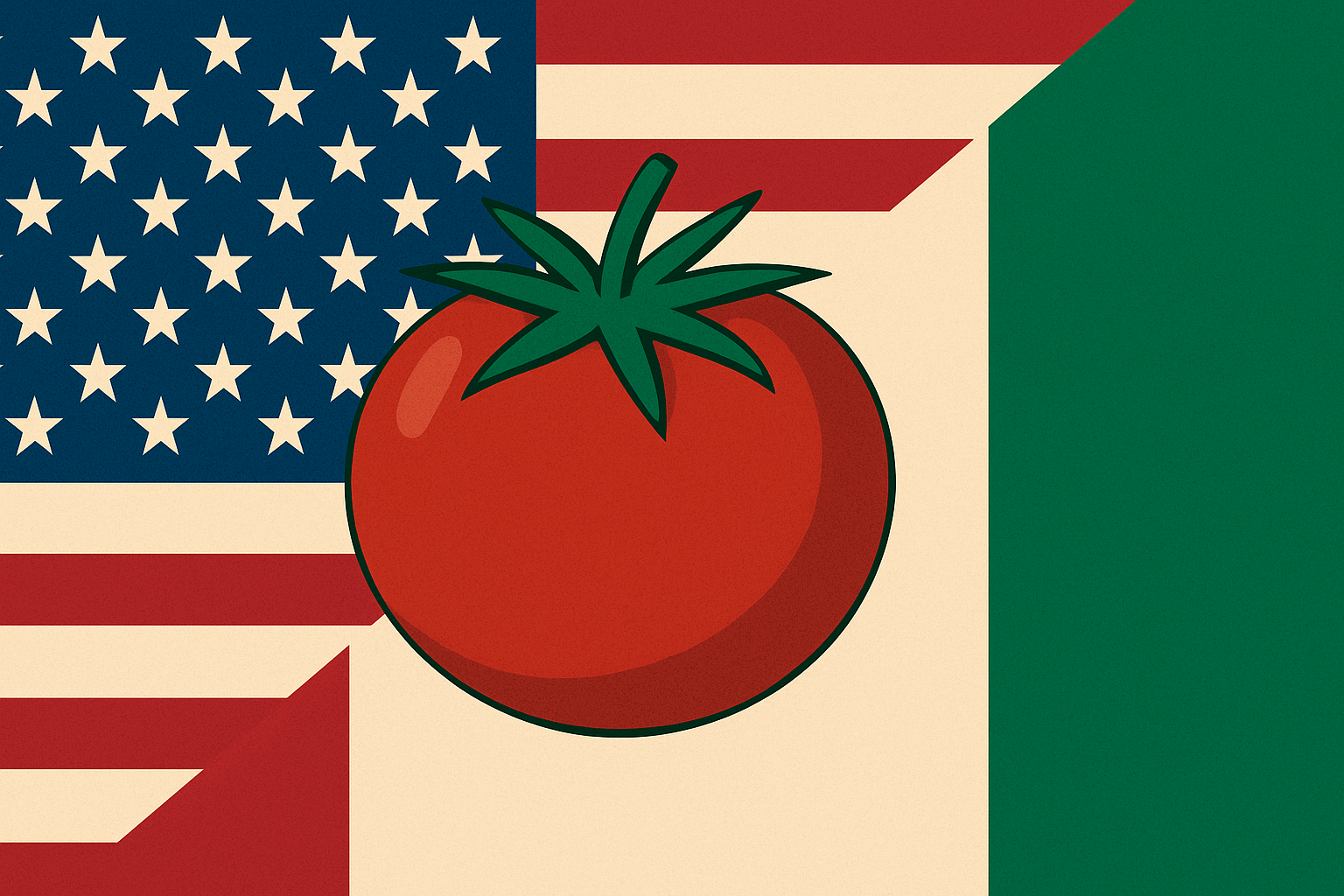In a bold move to support Florida’s dwindling tomato industry, former U.S. President Donald Trump has imposed a 17% anti-dumping duty on Mexican tomato imports, marking a significant intervention in agricultural trade. The measure, enacted in July, is aimed at protecting American growers from what they claim are unfair pricing practices by Mexican producers.
Florida’s Shrinking Tomato Fields
Once covering more than 60,000 acres in the 1990s, Florida’s tomato cultivation has shrunk by more than half. Many local farmers attribute this decline to Mexico’s growing dominance in the U.S. tomato market. Today, Mexican producers supply over 60% of all fresh tomatoes consumed in the U.S., thanks to lower labor costs, favorable weather, and advanced agricultural technology.
Bob Spencer, president of Florida-based West Coast Tomato, described the new tariff as both a relief and a reminder of the losses sustained over decades. “It’s happiness but a tinge of sadness, thinking about the ones that haven’t been able to survive,” he said.
A Symbol of Protectionist Policy
The tomato duty stands out as the first Trump-era trade measure to directly target a fresh food staple. Unlike broader tariffs tied to the U.S.-Mexico-Canada Agreement (USMCA), this action uses a separate legal instrument designed to counteract dumping — selling products below cost.
Trump’s decision aligns with his long-standing critique of trade agreements like NAFTA, which he argues undermined American industry. His administration withdrew from a long-standing tomato agreement with Mexico in mid-July, instantly triggering the new tariff.
Mexico Pushes Back
Mexican producers deny accusations of dumping and argue that their competitiveness stems from innovation, efficiency, and higher-quality production. Germán Gándara, president of the Mexican Association of Protected Horticulture and CEO of Ganfer Greenhouses, stated: “In Mexico, we’ve evolved in technology, in varieties, in quality, in flavors, in colors… frankly, we’ve become better.”
Gándara warned the new duties are already disrupting operations, forcing producers to renegotiate contracts and alter production plans. Though no major layoffs have occurred yet, the tariff threatens a $7 billion industry that employs about 500,000 people in Mexico.
Broader Impacts and Ongoing Uncertainty
The decision has sparked concern on both sides of the border. U.S. farmers see an opportunity to recover lost ground, while Mexican exporters — particularly small-scale farmers — struggle with the financial burden of the duties.
Mexico’s President Claudia Sheinbaum has expressed support for the sector but faces budget constraints that limit her government’s ability to intervene. Meanwhile, U.S. and Mexican officials continue broader trade talks, but no specific negotiations on tomatoes are currently underway.
The situation is further complicated by security issues, especially in Sinaloa — Mexico’s largest tomato-producing state — where cartel violence disrupts agriculture.
Who Bears the Cost?
While American producers hope to see higher farm-gate prices, retailers and distributors may absorb most of the cost increases in the short term. However, Mexico’s National Agricultural Council estimates that consumer prices in the U.S. could rise by as much as 11.5%.
According to Gándara, achieving significant tomato production increases in the U.S. would require substantial investments in land and technology — costs likely to be passed on to consumers.
“Trump might be right about some of the tariffs,” Gándara acknowledged. “But in this case, our production actually complements that of the United States.”



